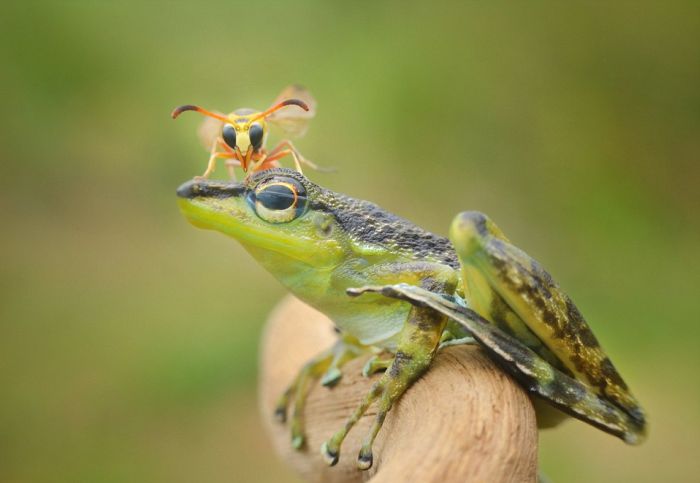|
|
Frog And The Wasp
|
Wasps first appeared in the fossil record in the Jurassic, and diversified into many surviving superfamilies by the Cretaceous. They are a successful and diverse group of insects with tens of thousands of described species; wasps have spread to all parts of the world except for the polar regions. The largest social wasp is the Asian giant hornet, at up to 5 centimetres (2.0 in) in length; among the largest solitary wasps is the giant scoliid of Indonesia, Megascolia procer. The smallest wasps are solitary chalcid wasps in the family Trichogrammatidae, some of which are just 0.2 millimetres (0.008 in) in length.
Wasps play many ecological roles. Some are predators, whether to feed themselves or to provision their nests. Many, notably the cuckoo wasps, are kleptoparasites, laying eggs in the nests of other wasps. With their powerful stings and conspicuous warning coloration, often in black and yellow, wasps are frequent models for Batesian mimicry by non-stinging insects, and are themselves involved in mutually beneficial Müllerian mimicry of other distasteful insects including bees and other wasps. Wasps have appeared in literature from Classical times, as the eponymous chorus of old men in Aristophanes' 422 BC comedy Σφῆκες (Sphēkes), The Wasps, and in science fiction from H. G. Wells's 1904 novel The Food of the Gods and How It Came to Earth, featuring giant wasps with three-inch-long stings. The name "Wasp" has been used for many warships and other military equipment.
|
|









